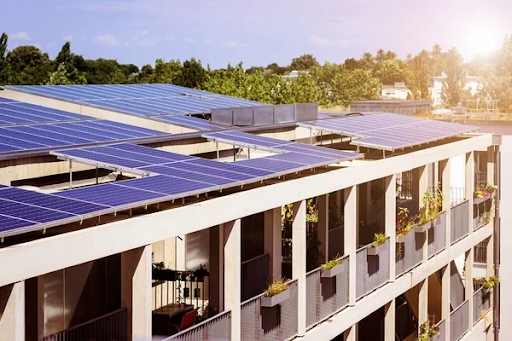In the pursuit of sustainable living, solar panels have emerged as a beacon of environmental consciousness, transforming the way we power our homes. As we delve into the era of eco-friendly architecture, sun-powered apartments have become a symbol of innovation and responsibility. In this article, we will explore the aesthetics and design considerations associated with integrating solar panels into residential buildings, unraveling the harmonious marriage between sustainability and style.

The Aesthetics of Solar Integration:
One of the primary concerns when incorporating solar panels into apartment buildings is the impact on aesthetics. Traditionally, solar panels were perceived as bulky and unsightly additions that disrupted the architectural integrity of a structure. However, advancements in solar technology and design have given rise to more aesthetically pleasing options, seamlessly blending functionality with elegance.
Apartment solar panels come in various forms, including solar roof tiles, solar windows, and even solar façades. Solar roof tiles, for instance, mimic the appearance of traditional roofing materials while harnessing the power of the sun. This integration ensures that solar panels no longer stand out as an eyesore but rather enhance the overall visual appeal of the building.
Design Integration and Architectural Synergy:
Architects and designers now face the exciting challenge of seamlessly integrating solar panels into the overall design of apartment buildings. The key lies in achieving architectural synergy, where solar technology complements the existing aesthetics rather than clashing with it.
The orientation and placement of solar panels play a crucial role in design integration. Strategic positioning can transform solar panels into functional design elements, contributing to the building’s overall character. For instance, incorporating solar panels into a building’s façade can create a dynamic play of light and shadow, adding depth and texture to the structure.
Color customization is another design consideration. Solar panels are no longer limited to the standard blue-black hue; instead, they can be tailored to match or complement the building’s color palette. This customization ensures that solar panels contribute to the overall design scheme rather than standing out as an incongruent element.
Sustainable Landscaping and Green Roofs:
Beyond the panels themselves, architects are exploring innovative ways to enhance the sustainability of sun-powered apartments. Integrating green roofs and sustainable landscaping not only complements the solar panels aesthetically but also contributes to energy efficiency and environmental conservation.
Green roofs, adorned with vegetation, act as natural insulation, reducing the need for artificial heating and cooling. This integration creates a harmonious blend of nature and technology, transforming the rooftop into a functional and visually pleasing space. The juxtaposition of solar panels against a backdrop of lush greenery creates a striking visual contrast, turning the rooftop into a symbol of sustainable living.
Community Engagement and Solar Aesthetics:
As the popularity of solar-powered apartments rises, community engagement becomes an integral part of the design process. Building aesthetics that resonate with the local community contributes to a sense of ownership and pride. Open communication and involvement in the design phase can address any concerns or preferences that the community may have regarding the aesthetics of solar integration.
Public art installations that incorporate solar panels can also be a creative way to engage the community. These installations not only serve as functional sources of renewable energy but also become landmarks that foster a sense of identity and community spirit.
Conclusion:
The integration of solar panels into apartment buildings represents a transformative shift towards sustainable living. The once utilitarian and unsightly solar panels have evolved into sleek, customizable elements that enhance the aesthetics of modern architecture. As architects continue to explore innovative design solutions, sun-powered apartments are not just about harnessing solar energy but embodying a commitment to a greener, more visually appealing future. The synergy between sustainability and style is paving the way for a new era in architectural design—one where solar panels seamlessly blend into the urban landscape, creating a sustainable and aesthetically pleasing environment for all.
Interesting Related Article: “Roofing, Restorations, and Solar Panels: Revolutionizing Home Upgrades“
